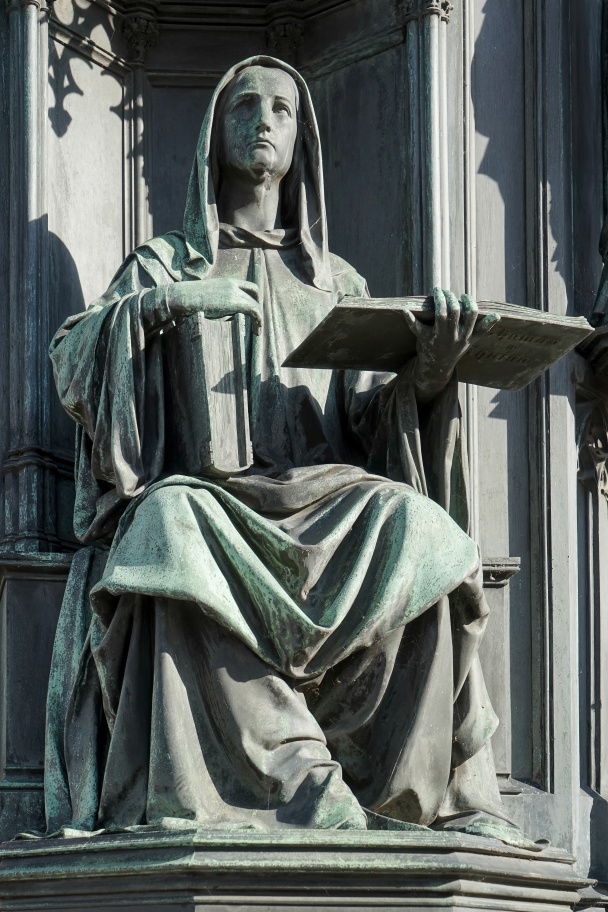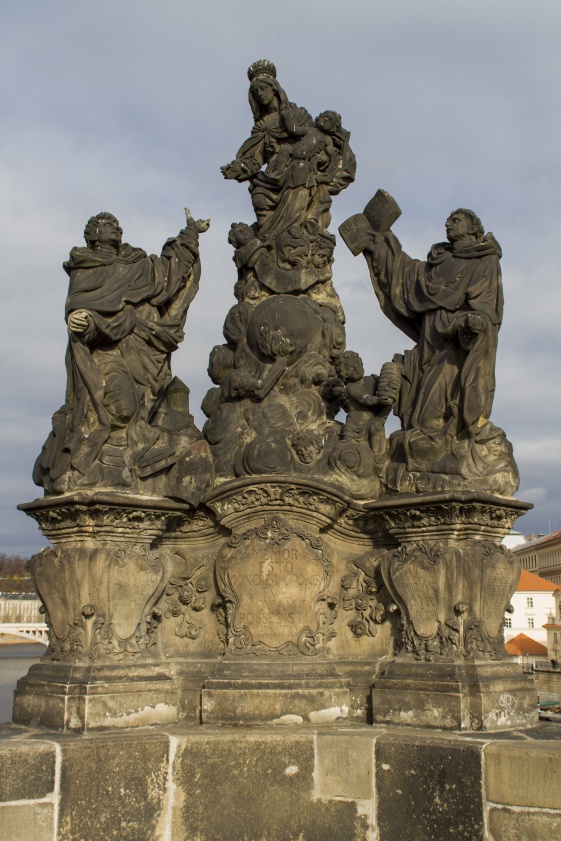
Preface
The birth of the “new natural law theory”—whose two primary exponents are Germain Grisez and John Finnis—can be dated with some plausibility to 1965, the year in which Grisez’s article on the first principle of practical reason appeared in the journal then called Natural Law Forum. Over these fifty plus years, these two scholars have associated the theory with the thought of the Angelic Doctor with varying degrees of insistence. The article just mentioned calls itself a commentary on the relevant article in the Summa Theologiae of Thomas Aquinas, and the first two—and most theoretical—volumes of Grisez’s now three-volume work The Way of the Lord Jesus both contain separate indexes to the works of St. Thomas, the first with over 650 entries. Finnis has published fairly recently a substantial volume entitled Aquinas: Moral, political, and legal theory, and the longest entry in the index of his more recent Collected Essays is dedicated to Aquinas. (Coming in at a close second is Aristotle, and this pair leave the rest of the field far behind.)
But, although certainly neither Grisez nor Finnis would ever reject out of hand a thesis proposed by Aquinas, they have both quite candidly declined to follow him in some important—even central—regards. Grisez, for instance, is critical of Thomas’s way of conceiving man’s ultimate end and Finnis maintains that “Aquinas’ efforts to follow Aristotle in classifying types of justice—its species, parts, and associated forms—yield no really clear and stable analytical pattern.”
Given, then, this situation, the present excerpt from a longer essay delivered at the Symposium Thomisticum in Paris, June 2016, does not address directly the question whether the new natural law theory as a whole is genuinely Thomistic: both Grisez and Finnis would be happy to acknowledge that, in certain regards, they depart from Thomas’s teaching. It considers rather specific interpretations of Thomas by Grisez and/or Finnis which the present author believes are mistaken. Showing that these interpretations are not consistent with Thomas’s thought is to present strong evidence that the new natural law theory ought not to be considered Thomistic. Here in this excerpt I briefly consider article 7 of question 64 of the secunda secundae, about “whether it is licit for someone to kill someone in self-defense.”
Aquinas, self defense, and the new natural law
(Part 1 of 2)
Summa Theologiae 2-2.64.7 ST 2-2.64.7 by is about whether it is licit for a person to kill another while defending himself. In his response, Thomas makes a basic distinction between personal self-defense and what we might call “public self-defense.” (Thomas mentions a “soldier fighting against foes” and “the minister of a judge fighting against a thief”). He says that personal self- defense, in which the agent’s intention is not to kill but to preserve his life, can be licit, although some acts of personal self-defense are illicit, as when the agent uses more violence than is appropriate to that same end. On the other hand, public self-defense can be licit even if intended, although even this type of self-defense is rendered illicit if the agent is motivated by personal animosity.
The use of ST 2-2.64.7 by the advocates of new natural law theory is problematic in a way different from the way their (and, especially, Grisez’s) use of ST 1-2.94.2 is. Grisez agrees with ST 1-2.94.2 or, at least, with that article as interpreted by him; but he and the others, although frequently citing ST 2-2.64.7, are less than enthusiastic about the second part of its corpus. The new natural law theorists understand the first part of the corpus as supporting their thesis that the basis of natural law is human goods, as opposed to precepts. Says Thomas at the beginning of the article:
Nothing prohibits there being two effects of a single act, only one of which is within the intention [in intentione], the other being beside the intention [praeter intentionem]. Moral acts, however, take their species with respect to what is intended, not from that which is beside the intention, since this is per accidens, as is made clear above.1 So, from the act of someone who defends himself there can follow a double effect: one, the conservation of one’s own life; the other, killing of the aggressor.
Our authors understand Thomas to be saying here, with them, that the moral character of acts is determined by what is intended, that is, by the proposal that the acting person adopts by choice. But they also think that that principle ought to be applied quite generally within ethics itself and so also to the types of acts mentioned later in that corpus, so that also public self-defense would be licit only if not intended. They say (in a co-authored article) that the “main issue in questions about the permissibility of using force” is whether an outcome “is intended—is part of the chosen (adopted) proposal—or rather is a side effect.”2 They then quote the beginning of ST 2-2.64.7c (translating in intentione as “intended” and praeter intentionem as “a side effect”), after which they remark:
But the point is in no way limited to questions of defense of self or others. Quite generally: “morally significant acts get their species [species] not from what happens as a side effect [praeter intentionem], but from precisely what it is that one intends [per se intentum].”
What they say here, however, about the species of acts and about intention is difficult to square with what Thomas argues in ST 2-2.64.7c. In particular, their interpretation of the first part of that corpus, from which interpretation emerge key theses of their theory, is mistaken.
The intent of what follows is to show that the basis of Thomas’s argument in ST 2- 2.64.7 is the precepts—or the laws which find their foundation in the precepts—of which he speaks in ST 1-2.94.2. It does indeed appear that, when Thomas says at the beginning of ST 2-2.64.7 that moral acts “take their species with respect to what is intended, not from that which is beside the intention,” he means that the moral character of any human act comes from what the agent of that act intends. In fact, however, he is not making a point about the moral analysis of individual acts but rather about the taxonomy of types of acts.

In ST 2-2.109.2, Thomas asks whether truth is a “special virtue” [specialis virtus]. He does not understand the word ‘special’ as we do today in English: his question is whether truth (or telling the truth) can be distinguished from other virtues, as in biology the species ‘bird’ can be distinguished from the species ‘fish.’ One of the objections in ST 2-2.109.2 argues that “the truth of life is called that by which someone lives rightly” but that this does not pick out a particular species of virtue since one lives rightly by any virtue. Thomas responds that he is not speaking about anything so general as “living rightly” but about the particular virtue “according to which someone speaks the truth” [ST 2-2.109.2 ad 3]. This virtue would be distinct not only from living rightly (because more specific) but also, for instance, from the virtue of courage. As he says in the corpus, “whenever in a human act there is found a special type [ratio] of goodness, it is necessary that man be disposed towards this by a special virtue.”
The second objection in ST 2-2.109.2 argues that “an act of truth” is an act by which a man makes manifest what pertains to himself; but this is found in any virtue, “since the habit of any virtue is made manifest by one’s own act”; therefore, truth is not a special virtue. Thomas’s response is couched in language that interests us:
The habits of the virtues and the vices are organized according to species from that which is intended per se, not from that which is per accidens and beside the intention [praeter intentionem]. That, however, someone makes manifest that which pertains to himself does indeed pertain to the virtue of truth as intended per se, although it can pertain to the other virtues as a consequence: beside the principal intention. A courageous man, for instance, intends to act courageously; but that someone acting courageously makes manifest the courage he possesses: this follows as a consequence beside his principal intention.
Thomas is speaking here not about the moral analysis of particular acts; he is not, that is, saying that the moral character of any particular act comes from what the agent intends.
He is saying rather that types of acts—which might be either virtuous or vicious—are “organized” or “sorted” [sortiuntur] into species by looking to what is intended per se by a hypothetical agent. Thomas acknowledges in the immediately preceding article that someone might tell the truth about himself, thereby doing something that pertains to the virtue of truth, and yet that act might be immoral in so far as its moral character is determined by some other factor, such as telling this truth without due cause. Similarly, as Thomas says in ST 2-2.64.7, one’s act might fall into the species of personal self-defense (a species of good acts), but that act might be rendered evil “if it is not proportionate to the end,” for instance, “if someone in defending his own life uses more force than is called for.”
This post will continue tomorrow, with Part 2 of 2, “On Truth and the Foundational Role of Precepts.”
Rev. Kevin Flannery , S.J., is Professor of the History of Ancient Philosophy, Pontifical Gregorian University in Rome, and Scholar with Virtue, Happiness, & the Meaning of Life.